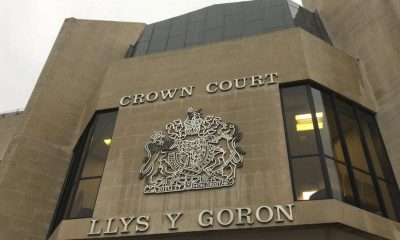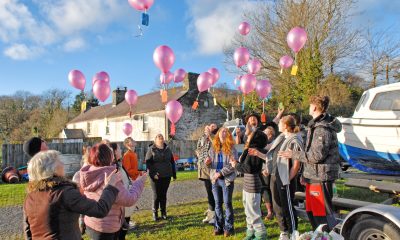Community
My remembrance
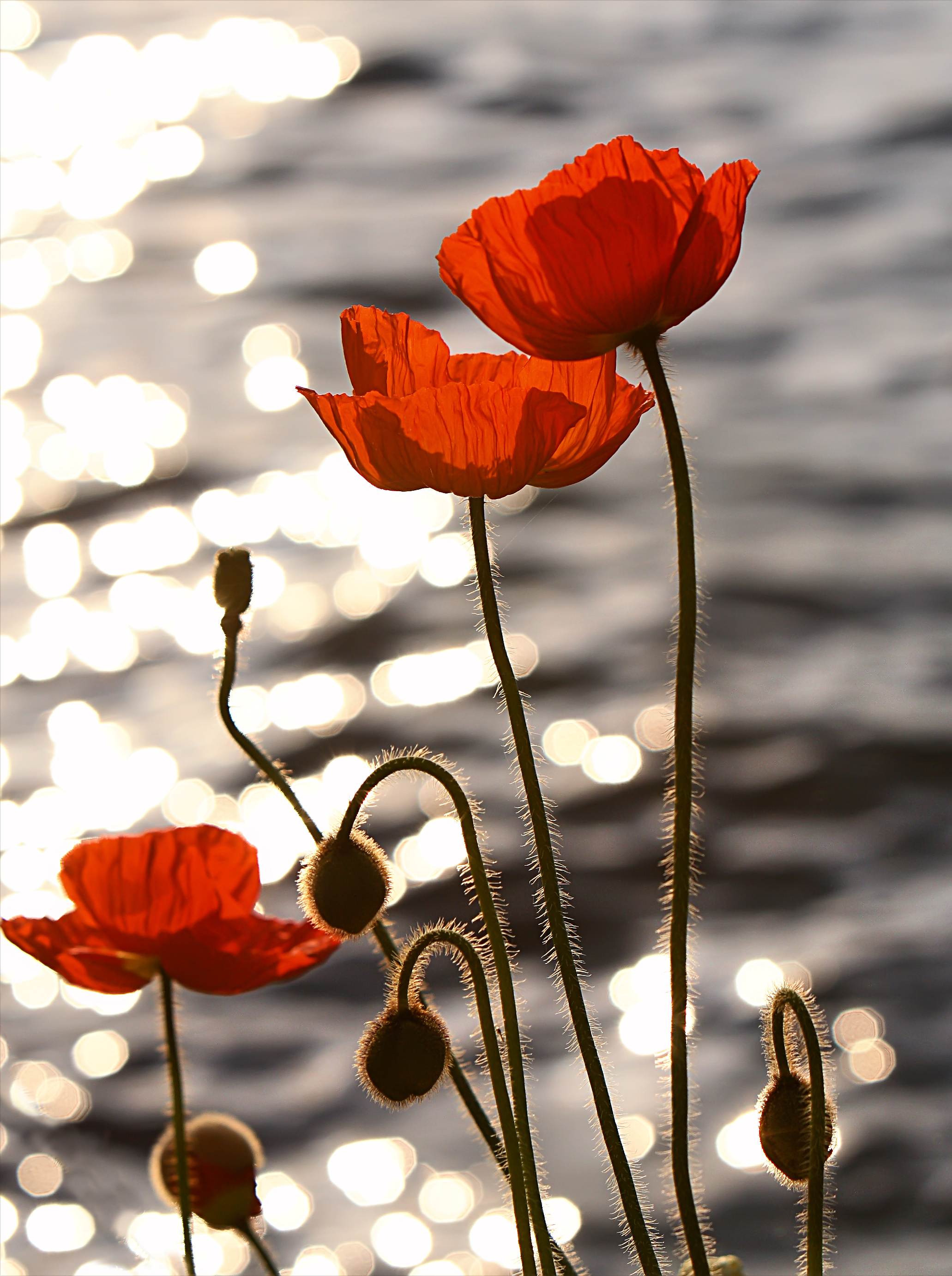
 FOR many , Remembrance Day is more than a commemoration of the thousands of men who gave their lives for our freedom. Men whose stories we hear but will never get to meet. For many of us, it marks a personal tribute to the men of our own families whose lives and innocence was lost and whose bravery must never be forgotten. This year marks the centenary of the First World War and the strength and courage of those men is more poignant than ever. This is my remembrance for the three generations of my family who fought in the First and Second World Wars. My Great Grandfather, George, was a Dockyard worker who spent his spare time repairing clocks. Like many of the young men he was called up with, he had no idea of what War would be like, of the conditions he would live in and the terrible things he would see. He was proud to be fighting for his country, so he left his home in Devon to become a soldier in WW1.
FOR many , Remembrance Day is more than a commemoration of the thousands of men who gave their lives for our freedom. Men whose stories we hear but will never get to meet. For many of us, it marks a personal tribute to the men of our own families whose lives and innocence was lost and whose bravery must never be forgotten. This year marks the centenary of the First World War and the strength and courage of those men is more poignant than ever. This is my remembrance for the three generations of my family who fought in the First and Second World Wars. My Great Grandfather, George, was a Dockyard worker who spent his spare time repairing clocks. Like many of the young men he was called up with, he had no idea of what War would be like, of the conditions he would live in and the terrible things he would see. He was proud to be fighting for his country, so he left his home in Devon to become a soldier in WW1.
He was part of the machine gun co, spending most of his service in the trenches. He was also involved in the Battle of Somme in 1916 which is most likely where he sustained his injuries. He was lucky not to be one of 58,000 troops killed during the battle. I don’t remember much about Great Granddad, except that he was very quiet and watchful. He never talked about the war or its effects on him. My Granddad, Robert, was a bricklayer and keen motorcyclist from Devon. When he was enlisted, he offered his services as a bricklayer.
There wasn’t any need for builders so he began infantry training in 1942. He later became a motorcycle Dispatch Rider (military messenger), serving for 5 years in North Africa, Italy and Palestine in several antitank regiments. Granddad kept a diary, a very frank account of what he saw and felt during the War. He was badly injured when a passing shell hit a farm house on the road he was walking down. Throwing himself to the ground, he remembers being littered with debris and a sharp pain in his back. It was later found that shrapnel from the shell had gone into his back, leg and shoulder.
This was removed in an operation but years later he could still feel small pieces of shrapnel in his knee and finger. Like many soldiers, Granddad wrote home to his family during the War. We discovered these letters after he’d passed away. There was also a prayer book, with an inscription inside by my Great Grandfather. This little book came safely through World War 1… Darling Bob, hoping you will come safely back to us.
The letters are heartfelt exchanges between a worried mother and a brave son. My Great Gran talks of my Great Grandfather ‘fire watching’ and the ‘Yanks’ nearly running her over in their Jeeps. Also the terrible silence as my Great Granddad works on his clocks and she sits with nothing to do but wait and worry. My Grandfather reassures her that he is well, requesting small items of comfort and to pass on his good wishes to friends at home. On leaving the War, Granddad wrote his diary entries into a book which I typed up for him and he had printed in 2008. Sadly he passed away in 2011, but I will never forget the tall man, who talked modestly about the war, cracked jokes at his own expense and loudly banged the side of the chair in time to the band on the Festival of Remembrance.
My Dad’s Great Uncle John Harris, affectionately known as Jack, left his family in LLanfrynach, Brecon in 1914. He joined the machine gun co and was heavily involved in front line battle. He died in a POW camp in Belgium in Sep 1918 just weeks before the Armistice. My Dad’s Uncle still has the letter from the British Red Cross announcing his death. In 2010 my family travelled out to France, to find the War Grave of Jack. They talk about the rows of grave stones, looking out over the Channel and the way they are beautifully kept by the locals. I think this was a cold realisation of all the lives lost, the Sons, Brothers, Fathers and Grandfathers who will never come home.
I am proud of my family’s military history and of the men and women who continue to fight for us. November 11 is a day to remember these people and the way they suffered to give us the freedom we enjoy today. We should never lose sight of that, of what it means to be alive, to share compassion. It’s the only way we can ever truly be thankful.
Charity
Welsh opticians raise £1,600 for people experiencing homelessness

SPECSAVERS Pembroke Dock has helped raise £1,600 to support people experiencing homelessness this winter, with all funds going to The Wallich’s winter appeal.
Thirteen stores from North, South and West Wales donated £1 for every customer feedback form completed during November to help The Wallich, Wales’ largest homelessness and rough sleeping charity, continue its vital work.
Supporting more than 8,000 people experiencing or at risk of homelessness across the nation each year, The Wallich runs around 100 diverse projects across 20 local authorities to provide hope, support and solutions to end homelessness.
Funds raised by Specsavers will go directly to the Wallich’s Flexible Assistance Fund, which provides small but vital emergency grants. The grants support people at crucial turning points, helping cover essential costs such as phone credit, rent or food shops.
This initiative is a continuation of Specsavers’ wider homelessness programme, which sees over a hundred Specsavers stores and Home Visits services hold out-of-hours or pop-up clinics and invite people affected by forms of homelessness to use their services for free.
Specsavers’ North Wales regional relationship manager, Martin Lawrence, who helped organise the fundraiser, says: ‘We’re really proud to be supporting The Wallich’s winter appeal at a time when support is needed most.
‘Homelessness affects people in every community and as locally owned and run businesses, Specsavers stores are committed to raising awareness of the issue and supporting people through their toughest moments.
‘We’re excited to build on the success of this fundraiser and strengthen our partnership with The Wallich in the new year.’
Louisa Turner, head of fundraising at The Wallich, adds: ‘Winter can be an incredibly difficult time for people experiencing homelessness and this support from Specsavers will make a real difference.
‘The funds raised will help provide emergency grants at critical moments – whether that’s putting food on the table, helping someone stay connected with their loved ones or preventing someone from losing a safe place to live.
‘This kind of support creates vital turning points and helps people move towards a safer, more secure future.’
Specsavers works year-round with homelessness charities including Crisis, Vision Care and The Big Issue, to improve access to healthcare and advocate for policy change – ensuring people experiencing homelessness can receive free eye tests, glasses and hearing checks.
To find out more about Specsavers or to book an appointment at your local store, visit: https://www.specsavers.co.uk/stores.
Business
Community council objections to Tenby Lidl store scheme

PLANS for a new store on the edge of Tenby by retail giant Lidl, which has seen objections from the local community council, are likely to be heard next year.
In an application recently lodged with Pembrokeshire County Council back in October, Lidl GB Ltd, through agent CarneySweeney, seeks permission for a new 1,969sqm store on land at Park House Court, Narberth Road, New Hedges/Tenby, to the north of the Park Court Nursing Home.
The proposals for the latest specification Lidl store, which includes 103 parking spaces, would create 40 jobs, the applicants say.
The application follows draft proposals submitted in 2024 and public consultations on the scheme, with a leaflet drop delivered to 8,605 local properties; an information website, with online feedback form; and a public exhibition, held last December at the De Valence Pavillion in Tenby, with a follow-up community event held at New Hedges Village Hall, close to the site, publicised through an additional postcard issued to 2,060 properties.
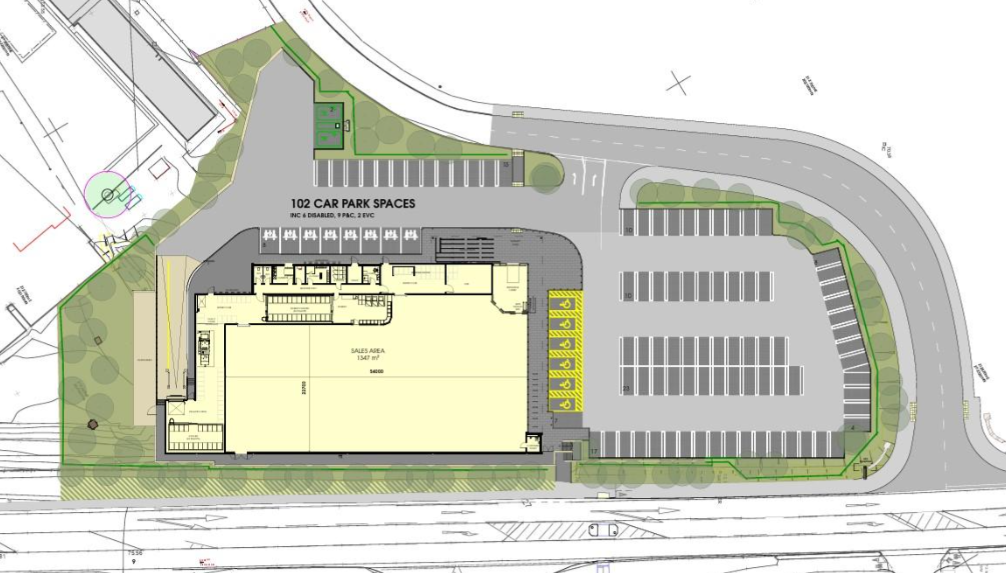
Some 1,365 responses have been received, with 89 per cent of respondents expressing support for the proposals, the applicants say.
A supporting statement says: “Lidl is now exceptionally well established in the UK with the Company operating c.980 stores from sites and premises both within and outside town centres. Its market share continues to increase substantially, and the company is expanding its store network considerably. The UK operational model is based firmly on the success of Lidl’s operations abroad with more than 10,800 stores trading across Europe.
It adds: “The granting of planning permission for the erection of a new Lidl food store would increase the retail offer and boost the local economy. The new Lidl food store would create up to 40 employment opportunities for people of all ages and backgrounds, providing opportunities for training and career development. This in turn will create an upward spiral of economic benefits.”
Local community council St Mary Out Liberty Community Council has formally objected to the scheme, saying that, while it supports the scheme for a Lidl store in principle, recognising “the economic benefits a new retail store could bring,” it says the proposed location “is unsuitable, conflicts with planning policy, and cannot be supported in its current form”.
Its objections add: “The A478 is heavily congested in peak tourist months. A supermarket would worsen congestion, increase turning movements, and heighten risks to pedestrians, cyclists, and emergency access.”
It also raises concerns on the potential impact through “noise, lighting, traffic disturbance, and loss of quiet amenity” on a neighbouring residential care home.
An initial assessment by Pembrokeshire County Council, highlighted concerns about the visual impact, with the authority’s landscape officer commenting that the store would introduce “an intense urban function into an otherwise rural context”.
The report added: “It is not considered to be compatible with the character of the site and the area within which it is located; and furthermore, will lead to a harmful visual impact on the setting of the National Park.”
The application will be considered by county planners at a later date.
Community
Craig Flannery appointed as new Chief Fire Officer
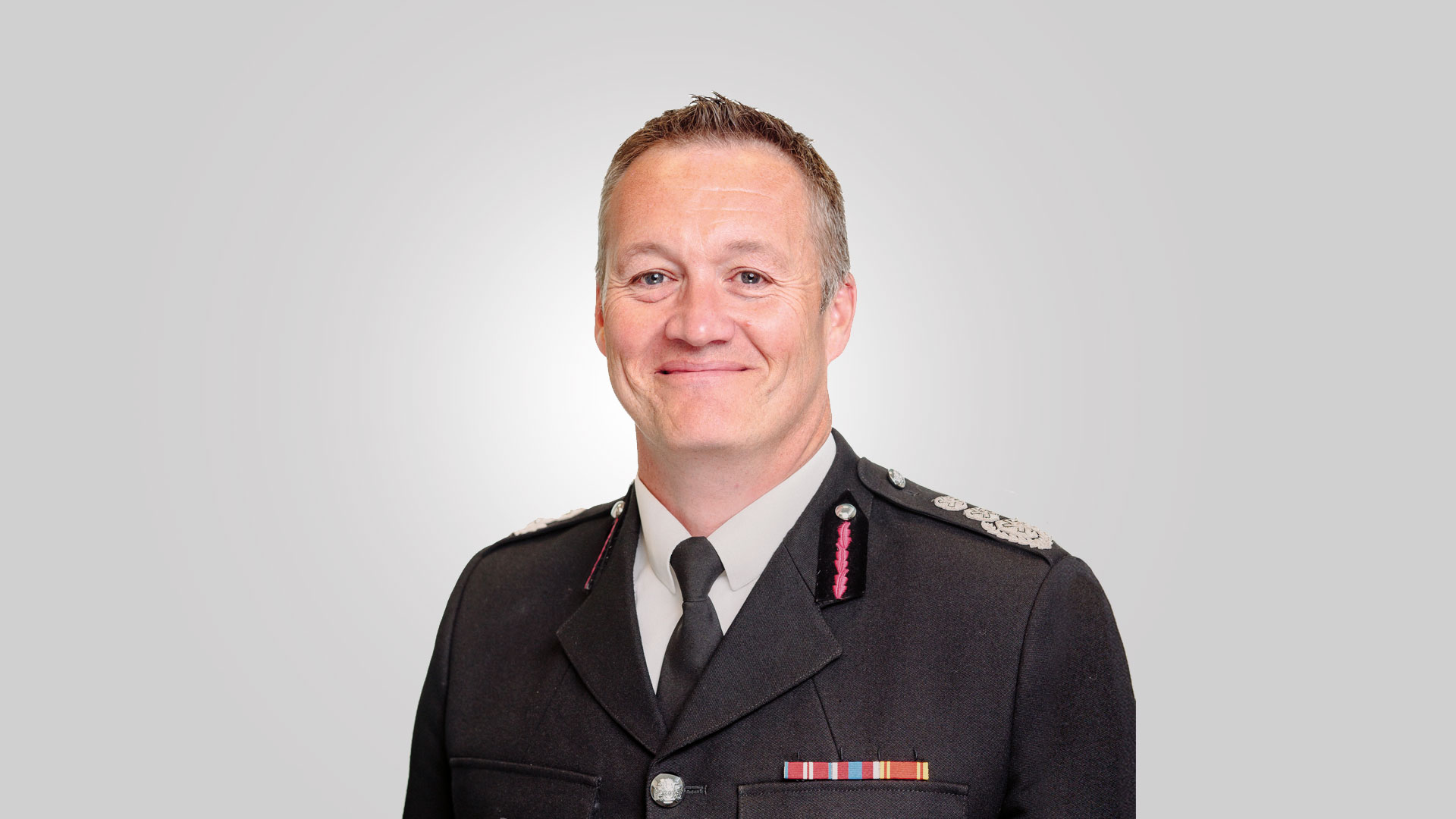
MID AND WEST WALES FIRE SERVICE LEADERSHIP CHANGE
MID and West Wales Fire and Rescue Service has announced the appointment of Craig Flannery as its new Chief Fire Officer, with effect from Monday, December 15, 2025.
Mr Flannery has served with the Service for more than twenty years, progressing through a wide range of middle management and senior leadership roles across both operational and non-operational departments.
During his career, he has been closely involved in strengthening operational delivery, risk management and organisational development. His work has included leading innovation in learning and development, overseeing the Service’s On-Call Improvement Programme, and driving investment in key enabling functions such as workforce development and information and communication technology.
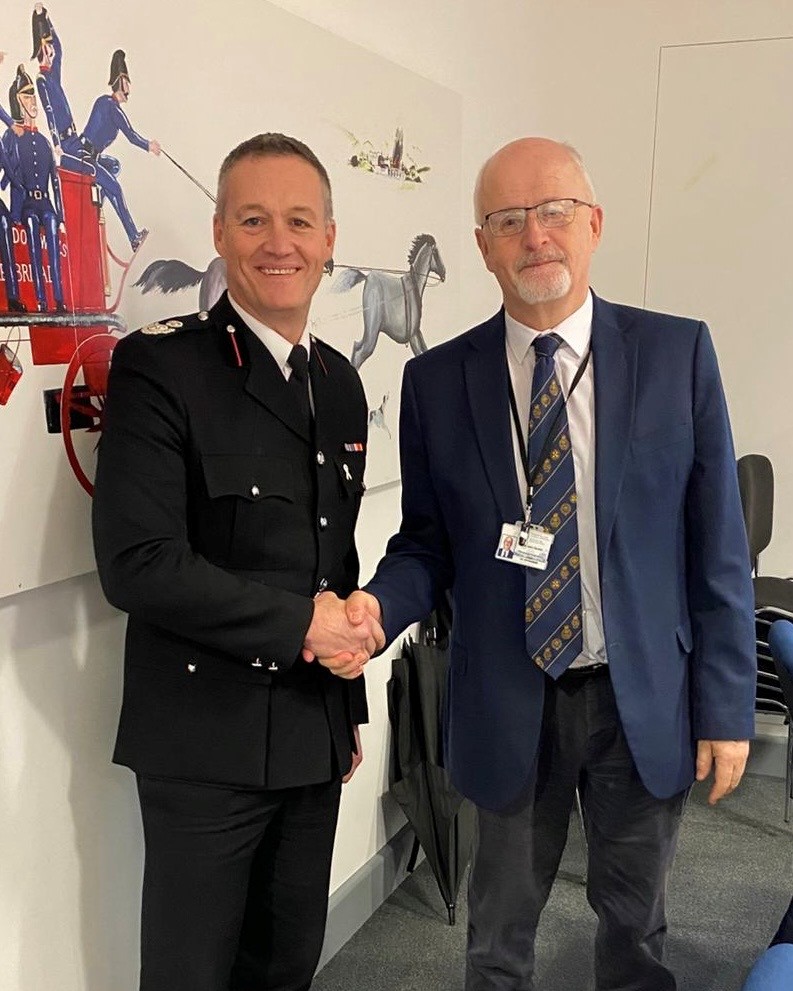
The appointment followed a rigorous, multi-stage recruitment process led by Mid and West Wales Fire and Rescue Authority. Candidates were assessed through structured interviews, strategic leadership exercises and scenario-based assessments designed to test operational judgement, organisational vision and the ability to lead a modern fire and rescue service.
External professional assessors were also engaged to provide independent scrutiny, ensuring the process met high standards of fairness, transparency and challenge.
Mr Flannery emerged as the strongest candidate, demonstrating clear strategic leadership capability, detailed organisational knowledge and a strong commitment to community safety and service improvement.
Councillor John Davies, Chair of Mid and West Wales Fire and Rescue Authority, said: “Craig brings a deep understanding of our Service and a clear vision for its future. His appointment will strengthen our ability to innovate, support our workforce and deliver high-quality protection for the communities we serve.
“As we navigate a rapidly changing landscape, Craig’s experience in driving innovation and organisational development will be invaluable in helping us adapt and transform for the future.”
Commenting on his appointment, Mr Flannery said: “It is a privilege to lead this outstanding Service. I am committed to supporting our people, strengthening partnerships and building on the strong foundations already in place.
“As the challenges facing fire and rescue services continue to evolve, we must modernise and innovate, ensuring we have the skills, technology and capability needed to meet the needs of our communities. I look forward to working with colleagues and partners across Mid and West Wales to deliver a resilient, progressive Service that keeps people safe and places our staff at the heart of everything we do.”
-

 Crime2 days ago
Crime2 days agoMilford Haven man jailed after drunken attack on partner and police officers
-
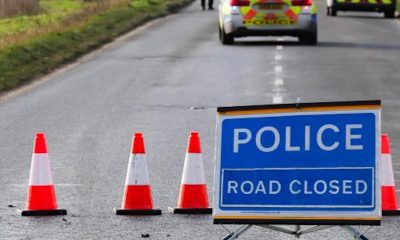
 News5 days ago
News5 days agoDyfed-Powys Police launch major investigation after triple fatal crash
-

 Crime2 days ago
Crime2 days agoTeenager charged following rape allegation at Saundersfoot nightclub
-
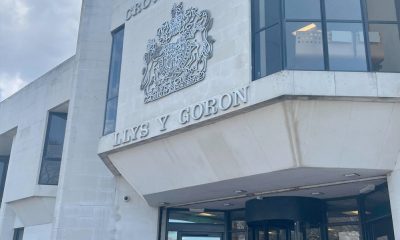
 Crime3 days ago
Crime3 days agoMan charged with months of coercive control and assaults
-

 Crime4 days ago
Crime4 days agoMan sent to Crown Court over historic indecent assault allegations
-

 Crime6 days ago
Crime6 days agoMan spared jail after baseball bat incident in Milford Haven
-
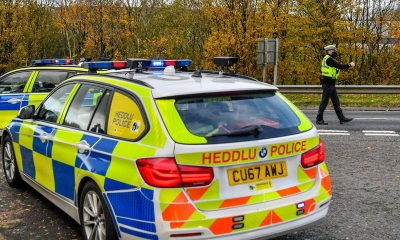
 Crime4 days ago
Crime4 days agoMilford Haven man admits multiple offences after A477 incident
-

 Crime3 days ago
Crime3 days agoWoman ‘terrified in own home’ after ex breaches court order










